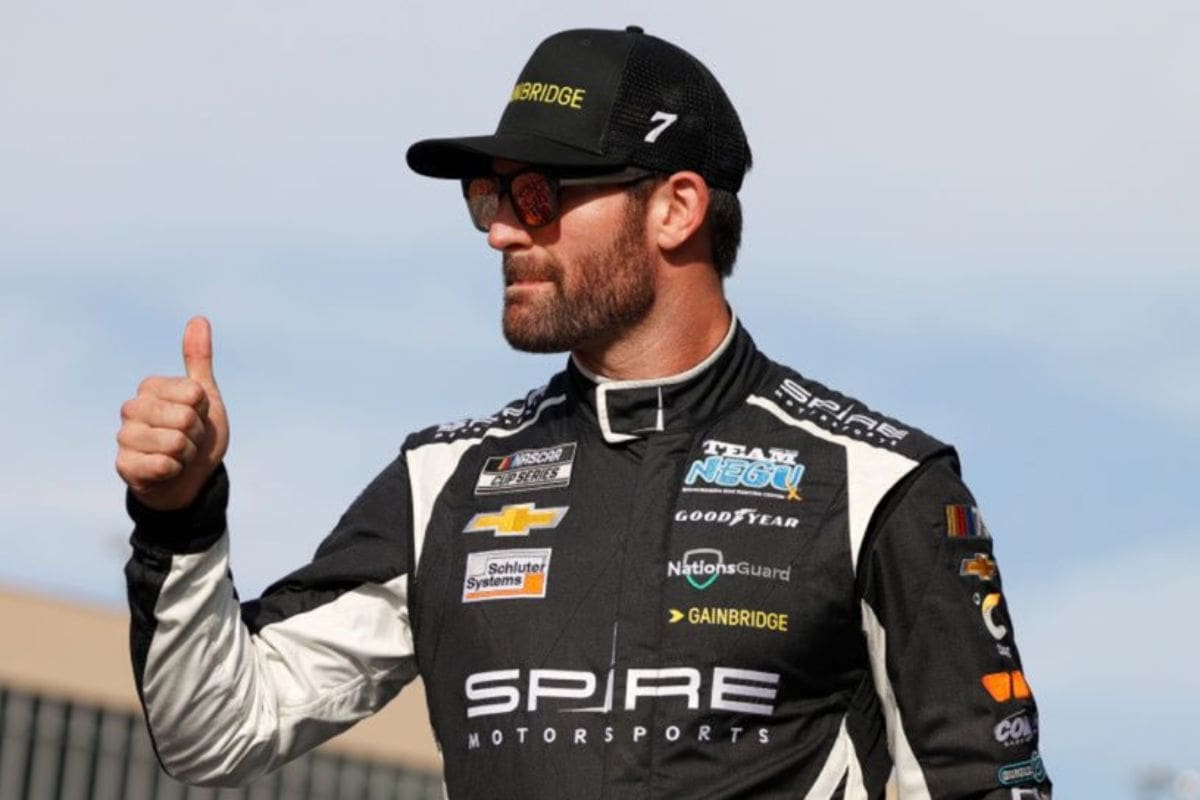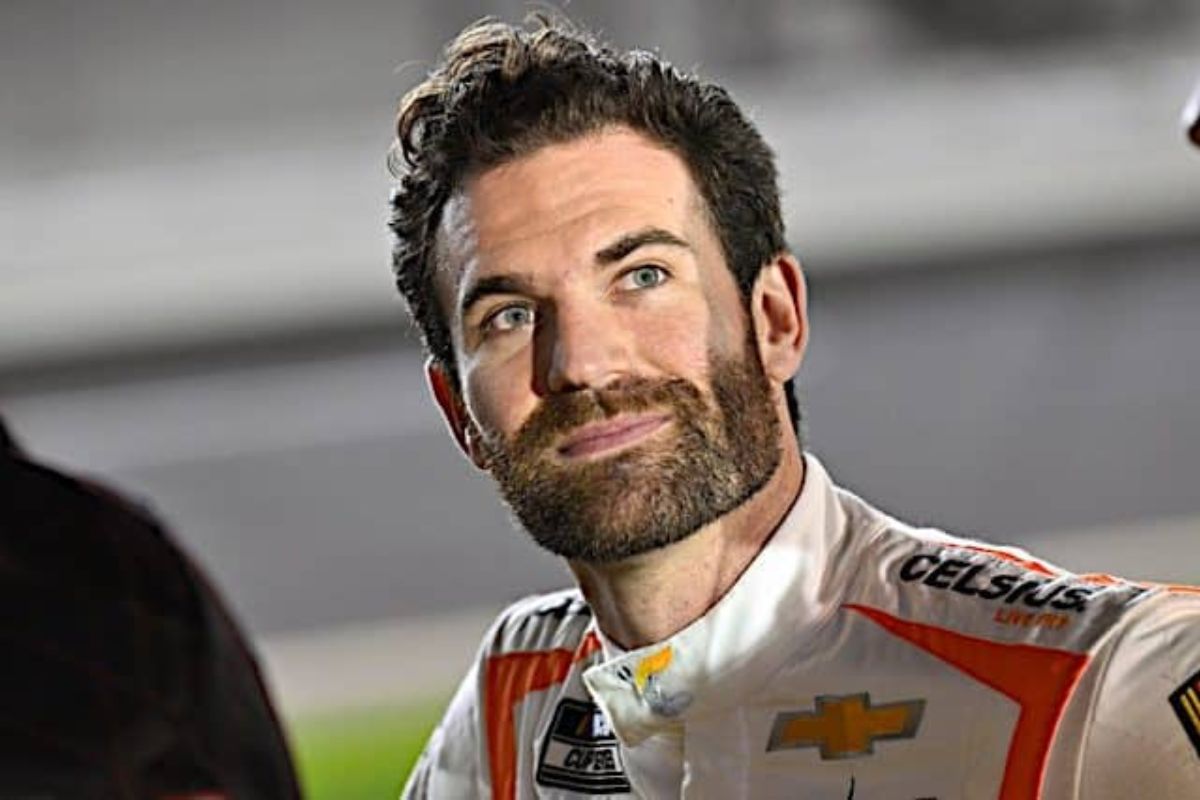Corey LaJoie’s Wild 9-Second Car Flip in Air: The recent incident involving Corey LaJoie in FireKeepers Casino 400 at Michigan International Speedway serves as a striking reminder of the inherent risks in NASCAR racing. During a mere nine moments, LaJoie’s car executed a dramatic flip after a collision with Noah Gragson, ultimately landing upright—a rare outcome that highlights the unpredictability of motorsports and the advancements in safety engineering. LaJoie’s reaction, marked by surprising humor and resilience, raises questions about the effectiveness of current safety protocols and the psychological impact of such harrowing experiences on drivers.
Key Highlights
- Corey LaJoie’s car flipped upside down after a collision with Noah Gragson on lap 136, showing NASCAR’s unpredictability.
- The crash initiated a chain reaction, resulting in LaJoie’s vehicle performing multiple rolls before landing back on its wheels.
- LaJoie humorously described the crash as “a ride, buddy,” reflecting on the chaos and psychological toll of racing.
- The incident raised concerns about safety protocols in NASCAR and the performance of modern safety technology under extreme conditions.
- Tyler Reddick won the race at Michigan, contrasting LaJoie’s dramatic crash with the success of others in the event.
Corey LaJoie’s Wild Ride at Michigan International Speedway
Corey LaJoie’s recent experience at Michigan International Speedway during the FireKeepers Casino 400 highlighted the unpredictable nature of motorsports, where split-second decisions can lead to dramatic consequences. On lap 136, LaJoie’s No. 7 car made contact with Noah Gragson’s No. 10 vehicle, initiating a chain reaction that would transform a competitive race into a harrowing spectacle. The collision propelled LaJoie’s car into a slide toward the infield, where it rapidly lost control, spun, and ultimately flipped upside down.
This incident serves as a significant reminder of the risky balance between skill and chance that defines NASCAR racing. The physics of high-speed motorsports are unforgiving; a minor miscalculation or a slight misalignment can result in a catastrophic outcome. LaJoie’s vehicle, after enduring multiple rolls, miraculously landed back on its wheels, proof of advancements in safety technology within the sport. The design of modern NASCAR vehicles incorporates features specifically engineered to withstand such incidents, providing essential protection to drivers.
COREY LAJOIE FLIPS AT MICHIGAN! Glad he is okay. CRAZY NASCAR MONDAY RACING! #NASCAR pic.twitter.com/yvHkXJYA3j
— Tino Pattigno III (@tinopattigno) August 19, 2024
Moreover, the implications of LaJoie’s flip extend beyond the immediate thrill of the race. It highlights the necessity for continuous evaluation of safety protocols and the performance of equipment under extreme conditions.
While LaJoie escaped safely, the incident emphasizes the inherent risks drivers face and the importance of maintaining a steadfast focus, even amidst the chaos of competition. As teams analyze this event, it becomes vital for them to extract valuable lessons that can improve driver safety and performance in future races.
LaJoie’s Perspective on the Michigan Incident
From LaJoie’s perspective, the incident at Michigan International Speedway was a moment of chaos and profound experience that represented the inherent unpredictability of NASCAR racing. The visceral reality of the crash, described succinctly by LaJoie as “a ride, buddy,” shows the chaotic elements that drivers contend with at high speeds. The surprise of sparks and debris entering the cockpit during the roughly 1,000-foot slide serves as a vivid reminder of the potential hazards that lurk on the racetrack.
LaJoie’s reflections reveal a complex interplay of emotions; while he acknowledges the adrenaline-fueled terror of flipping over at such a velocity, there is also a sense of disappointment regarding the performance of his vehicle. The Garner Truck Camaro, he believed, had the potential to secure a top-10 finish that day, a validation of the hard work and preparation that had preceded the race.
“It was a ride, buddy. There’s sparks and dirt and all sorts of stuff coming in. I just hate that our Garner Truck Camaro got a little dinged up. I think we had a top-12, top-10, car today, and I hate that we ended up on our roof.” – (LaJoie)
The abrupt transformation from a promising race to an upside-down reality highlights the fragility of success in motorsports.
LaJoie’s Reaction After the Michigan Crash
The aftermath of the crash in Michigan revealed LaJoie’s characteristic blend of humor and introspection, serving as a demonstration of his resilience as a driver. In a post-incident interview with FOX’s Bob Pockrass, LaJoie expressed a mix of disbelief and levity, stating, “I don’t know if it was the arms of an angel or what it was, but that thing was up quick.” His light-hearted comment belied the gravity of having been upside down, showing how humor can serve as a coping mechanism in high-stress situations.
LaJoie’s analysis of the crash was just as insightful. Acknowledging his lack of engineering expertise, he pointed out the notable headwind—estimated at 15-20 miles per hour—that likely contributed to the car’s unexpected flip. This awareness reflects a deeper understanding of the complex dynamics at play in NASCAR, where environmental factors can dramatically alter outcomes.
However, LaJoie was frank about his distaste for tumbling through the air, revealing a more serious side when he remarked, “I don’t like to get upside down. I’ve done it twice this year and it’s no fun.” This statement emphasizes the physical and psychological toll of such incidents and highlights the inherent risks associated with motorsports.
Corey LaJoie goes for a wild ride in Michigan. He's okay. pic.twitter.com/ZYM3PWpqym
— FOX: NASCAR (@NASCARONFOX) August 19, 2024
Race Conclusion and LaJoie’s Incident
Following the dramatic incident involving LaJoie, the race finished with Tyler Reddick securing victory in a 200-lap event at the Michigan International Speedway. This race had been particularly suspended due to inclement weather the previous day, heightening the anticipation among fans and competitors. Reddick’s performance was marked by tactical skill and the ability to adapt to the changing dynamics of the track, ultimately allowing him to drive through the chaos that occurred after LaJoie’s harrowing flip.
LaJoie’s crash, which occurred late in the race, captured the attention of the audience and raised considerable concerns regarding safety in NASCAR. The incident, described as a “wild flip,” highlighted the inherent dangers that drivers face at high speeds, especially on a track known for its high-banked turns.
While Reddick celebrated his victory, the aftermath of LaJoie’s incident prompted discussions among teams, officials, and fans about the safety protocols in place and the measures needed to protect drivers in such risky situations.
As the race reached its finale, Reddick’s skillful driving through the final laps, coupled with a well-timed pit strategy, guaranteed that he emerged unscathed from the turmoil that marked the closing stages of the event.
News in Brief: Corey LaJoie’s Wild 9-Second Car Flip in Air
The dramatic crash involving Corey LaJoie at Michigan International Speedway serves as a reminder of the inherent risks associated with motorsports. The incident, characterized by its unexpected nature and the remarkable resilience of LaJoie’s vehicle, highlights the ongoing discourse surrounding driver safety and the effectiveness of existing protocols.
As the racing community reflects on this event, it becomes increasingly evident that continuous advancements in safety measures are imperative to protect drivers in the fast-paced, unpredictable environment of NASCAR.
ALSO READ: Corey Lajoie Welcomes NASCAR’s New Tire Options: “This Unlocks a Number of Possibilities”



